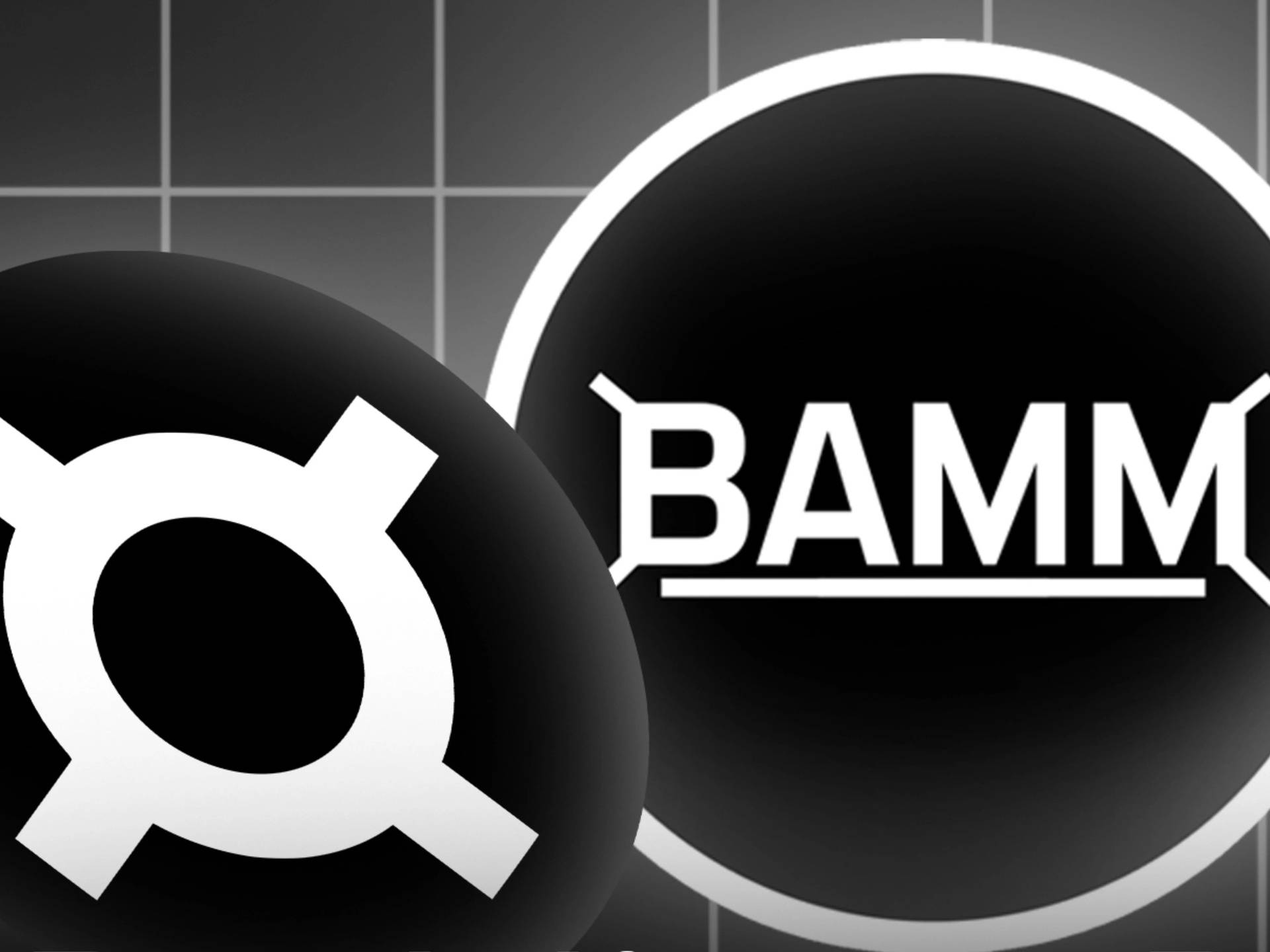위키 구독하기
Share wiki
Bookmark
Borrow Automated Market Maker (BAMM)
에이전트 토큰화 플랫폼 (ATP):에이전트 개발 키트(ADK)로 자율 에이전트 구축
Borrow Automated Market Maker (BAMM)
BAMM은 Fraxswap을 기반으로 구축된 차입/대출 모듈입니다. 다른 차입 대출 모듈과 달리 BAMM은 안전하게 작동하기 위해 외부 오라클이나 외부 유동성이 필요하지 않습니다. [1] [6]
개요
BAMM을 사용하면 견고한 오라클이나 충분한 유동성이 없어 이전에는 불가능했던 페어에 대한 차입 대출 서비스를 만들 수 있습니다.
차용인은 대출자가 제공한 유동성을 임대하여 자동으로 레버리지를 높이거나 낮추므로 변동성이 큰 경우에도 지급 능력을 유지할 수 있습니다. 즉, 차용인은 갑작스러운 청산을 경험할 수 없으므로 청산인에게 높은 청산 수수료를 지불할 필요가 없어 차용인과 대출자 모두에게 더 나은 거래를 제공합니다.
각 BAMM 풀은 두 개의 토큰을 보유하는 단일 Fraxswap 풀을 기반으로 구축됩니다. 차용인은 갑작스러운 청산에 대한 두려움 없이 각 토큰을 안전하게 롱 및 숏할 수 있습니다. [6]
대출자
대출자는 Fraxswap에서 BAMM 대출 풀로 전체 범위 유동성 LP 토큰을 대출합니다. 대출 금액은 다음 공식을 사용하여 계산됩니다. sqrt(X×Y). 여기서 X와 Y는 풀에 있는 두 토큰의 수입니다. 대출자는 Fraxswap에서 거래 수수료를 받고 유동성을 임대하는 차용인으로부터 이자율을 얻습니다. [6]
차용인
각 차용인은 담보를 넣고 유동성 풀에서 유동성을 임대하고 토큰을 인출하는 자체 볼트를 가지고 있습니다. 임대된 유동성 LP 토큰은 임대 시 소각되고 기본 토큰은 사용자의 볼트에 담보 역할을 하도록 배치됩니다.
사용자는 볼트에서 토큰을 인출할 수도 있지만 지급 능력을 유지해야 합니다. 임대된 유동성 금액이 볼트의 sqrt(X×Y)의 98% 미만인 경우 사용자는 지급 능력이 있습니다. 임대된 LP 금액과 볼트의 자산 모두에 대해 sqrt(X×Y)가 지급 능력을 계산하는 데 사용됩니다. 이러한 값은 가격 변동이 있어도 변경되지 않으므로 차용인은 가격이 변동해도 지급 불능 상태가 될 수 없습니다. 차용인의 부채는 이자율 지급으로 인해 시간이 지남에 따라 천천히 증가하므로 차용인은 청산을 피하기 위해 정기적으로 자신의 포지션을 확인해야 합니다. 임대된 유동성에 대한 이자율은 Fraxlend에서도 사용되는 동적 이자율 모델을 사용하여 계산됩니다. [6]
BAMM과 다른 AMM의 차이점
Borrow AMM과 다른 AMM의 차이점은 다음과 같습니다.
- 유동성 공급자는 토큰을 스왑할 수 없으며 Uniswap v2와 같은 AMM인 Fraxswap LP 토큰을 제공합니다. 다른 사용자는 해당 풀에서 토큰을 스왑할 수 있습니다. 즉, 대출된 토큰의 비율이 시장 가격에 따라 변경됩니다.
- 유동성 공급자는 자체 수수료를 설정할 수 없습니다. 유동성 공급자는 LP 토큰을 사용하는 차용인으로부터 이자를 받고 활용되지 않은 LP 토큰에 대해 Fraxswap에서 스왑 수수료를 받습니다.
- 대출자의 경우 다른 AMM과 비교할 때 주요 차이점은 LP 토큰이 때때로 차용에 사용되고 인출할 수 없다는 것입니다. 활용률이 높으면 이자율이 올라가 대출자는 이러한 불편함에 대해 보상을 받습니다.
- 차용인의 경우 다른 대출 상품을 사용하는 것과 비교할 때 주요 차이점은 청산될 수 없다는 것입니다. 이는 내부적으로 LP 토큰을 차용하고 LP 토큰 내부의 토큰 비율이 시장 가격에 따라 변경되기 때문입니다. BAMM은 어떤 시장 가격에서도 사용자의 포지션이 손실되지 않도록 합니다. 사용자는 가격이 하락하면 일부 담보를 판매하고 가격이 상승하면 더 많은 담보를 구매하는 소프트/비청산으로 이를 경험할 것입니다.
- BAMM에는 고정 기간 대출/차입이 없습니다.
BAMM 제공업체
Borrow AMM은 DeFi 공간에서 비교적 새로운 개념이며 이를 제공하는 암호화 금융 또는 회사가 많지 않습니다. Frax Finance, GammaSwapLabs, infinitypool, Timeswap, SushiSwap 및 Panoptic_xyz와 같은 주목할 만한 업체는 이미 이 분야에서 큰 발전을 이루고 있습니다.
- Frax Finance: Frax Finance는 보다 자본 효율적이고 혁신적인 스테이블코인 생태계를 만드는 것을 목표로 하는 부분 알고리즘 스테이블코인 프로토콜입니다. Frax Finance는 분산되고 허가 없는 방식으로 사용자가 유효성 검사기를 실행할 수 있도록 하는 유동성 스테이킹 토큰인 frxETH V2와 통합될 2023년에 Borrow AMM(BAMM)을 출시하기 위해 계획하고 적극적으로 코딩하고 있습니다. Frax Finance의 핵심 팀이 구축한 BAMM을 통해 사용자는 오라클 없이도 모든 토큰에 레버리지를 사용할 수 있습니다. 이제 안전한 방식으로 LP 풀에서 차용할 수 있는 기능을 추가함으로써 BAMM은 누구나 활용할 수 있는 진정으로 분산된 방식으로 DeFi 삼위일체의 모든 부분을 포괄하는 기본 요소의 첫 번째 인스턴스입니다. BAMM은 다른 대출 플랫폼보다 더 복잡합니다. 대출자에 대한 위험은 다르며 이제 AMM의 유동성 공급자와 동일하므로 Aave와 같은 대출 플랫폼에서 대출하는 것과 비교하여 가격 위험을 감수합니다. [1][2][3]
- Timeswap: Timeswap은 Ethereum, Arbitrum, Polygon 및 기타 네트워크에서 작동하는 AMM 기반 대출 및 차입 프로토콜입니다. Borrow AMM과 유사하게 고정 만기 및 대체 불가능한 대출을 제공합니다. Timeswap은 고정 기간 대출 및 차입을 가능하게 하는 최초의 AMM이라고 주장합니다.
- SushiSwap: SushiSwap은 여러 블록체인에서 작동하는 인기 있는 AMM 및 분산형 거래소입니다. SushiSwap은 사용자가 모든 토큰 쌍으로 사용자 지정 대출 및 차입 시장을 만들 수 있도록 하는 Kashi라는 새로운 기능을 개발하고 있습니다. Kashi는 격리된 위험, 유연한 수수료 및 레버리지를 가능하게 하는 BentoBox라는 새로운 AMM 설계를 사용합니다.
잘못된 내용이 있나요?
